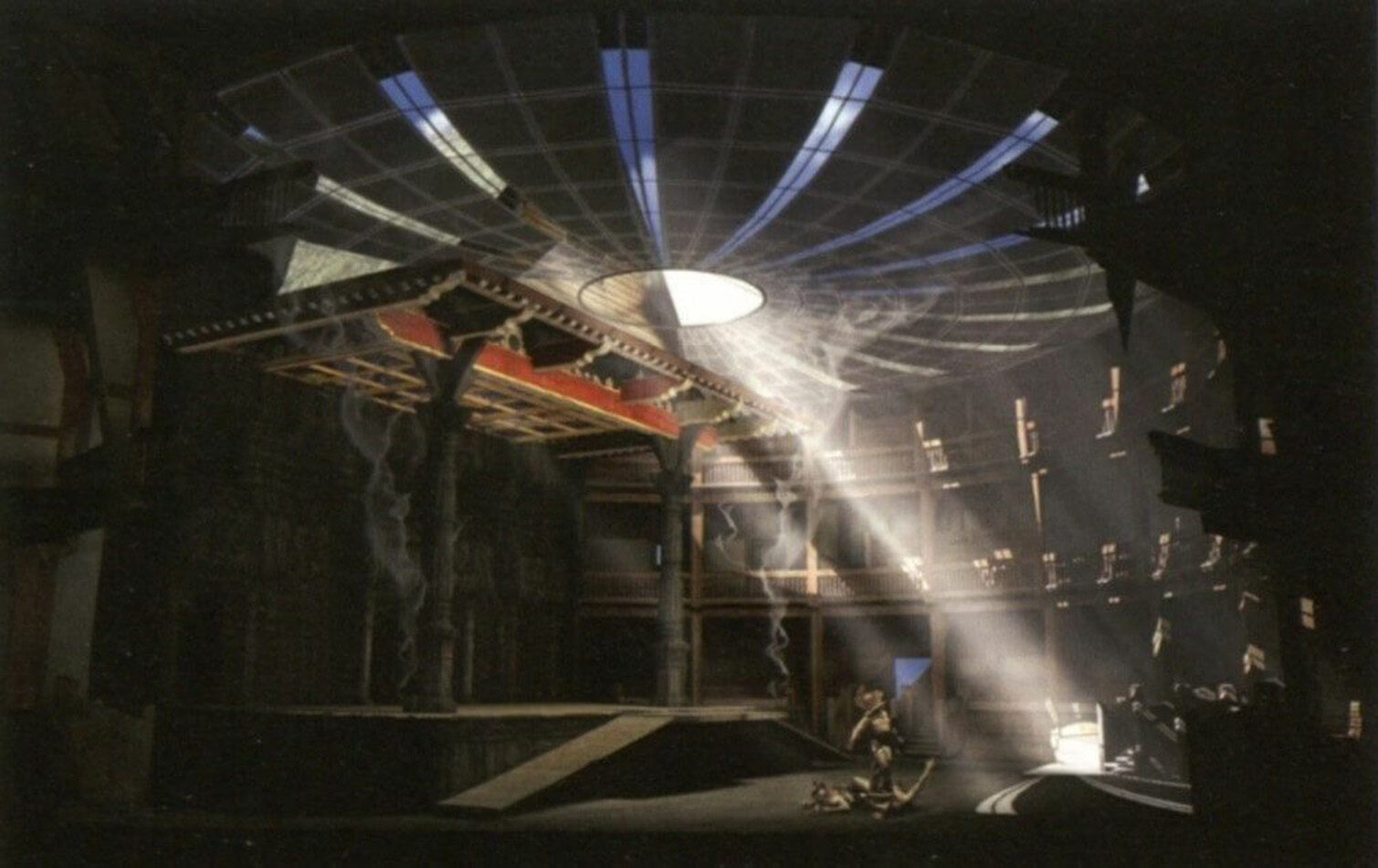“Blood and revenge are hammering in my head”: Get your Halloween horror fix in Shakespeare’s Globe Archive.
With COVID-19 scuppering so many holiday plans in 2020 I was determined to still get my Halloween fix this year. Pumpkins have been carved, I’m ready to consume my body weight in pick ‘n’ mix and I’ve been delving back into one of my favourite productions of Shakespeare’s famously gruesome Titus Andronicus in Shakespeare’s Globe Archive.
A lesser-known Shakespeare play for many, Titus Andronicus is, as the script forewarns in Act 1 Scene 1, “laden with horror’s spoils”. And with a plot driven by blood-thirsty revenge and foreboding stage directions often paired with fake blood by the bucket load, directors of Titus Andronicus have found themselves concocting the perfect recipe for keeping an audience as gripped to the story as they are in horror to their seats.
Lucy Bailey’s 2014 revival at London’s Globe Theatre really ramped up the horror factor, transforming the famous London landmark into a “temple of death” and winning rave reviews as result, which can be seen splattered across the marketing posters. Indeed, so violent is the plot, and so unnerving the characters in this production, several members of the audience are recorded in the Front of House Show Reports as being escorted to the first aid room “feeling faint” and “a little unwell”!

Poster for Titus Andronicus (2014) © Reproduced with kind permission of Shakespeare's Globe Archive. Further reproduction is prohibited without permission.
And no wonder. We can see from the Prompt Book of this production that Bailey was not content with simply letting the infamously gruesome plot unfold, but repeatedly sought to intensify the production’s sense of panic and horror in each minute detail. For instance, the second dress rehearsal notes stress that, for the Nurse’s scene, “all of this moment needs to be much higher stakes!” and that the cast “really needs to enter with higher intensity”.
In an interview printed in the Programme for this production, Bailey also offers an explanation for her relentless drive to stage heightened and “incomprehensible violence”:
the raw physicality of the play, the confrontation of man on man on an almost bestial level led us to understand the theatre space as an arena, a bloodbath…

Programme for Titus Andronicus (2014) © Reproduced with kind permission of Shakespeare's Globe Archive. Further reproduction is prohibited without permission.
In another bold move, Bailey not only shrouded London’s iconic open-air theatre in a black cloth velarium to block out the natural light and intensify what Designer, William Dudley, described as “a sense of claustrophobic doom”, but also paired the audiences’ entrance to the auditorium with the menacing sound of knives being sharpened. What better way to put the audience on edge before the play’s horrors even begin to unfold!
And unfold they do, with deception, execution and torture a plenty. There are no fewer than 14 deaths in the play, each more horrific than the next. Perhaps most famous are the deaths of Chiron and Demetrius, who are baked in a pie and later served to their own mother, Goth Queen Tamora, as punishment for the horrific treatment of Lavinia.
This gruesome scene has become so iconic that it has inspired many a horror scene since Shakespeare penned it. Who can forget Arya’s heinous revenge on House Frey in Game of Thrones, when she bakes two sons of the murderous Walder into a pie and serves it to him? Note to self – no need to buy Pumpkin Pie this Halloween!
For more information about Shakespeare's Globe Archive, including free trial access and price enquiries, please email us at info@amdigital.co.uk.
Recent posts

The blog highlights American Committee on Africa, module II's rich documentation of anti-apartheid activism, focusing on the National Peace Accord, global solidarity, and student-led divestment campaigns. It explores the pivotal role of universities, protests, and public education in pressuring institutions to divest from apartheid, shaping global attitudes toward social justice and reform.

This blog examines how primary sources can be used to trace the impact of young voices on society, particularly during pivotal voting reforms in the UK and the US. Explore materials that reveal insights into youth activism, intergenerational gaps, and societal perceptions, highlighting their interdisciplinary value for studying youth culture, activism, and girlhood across history.
